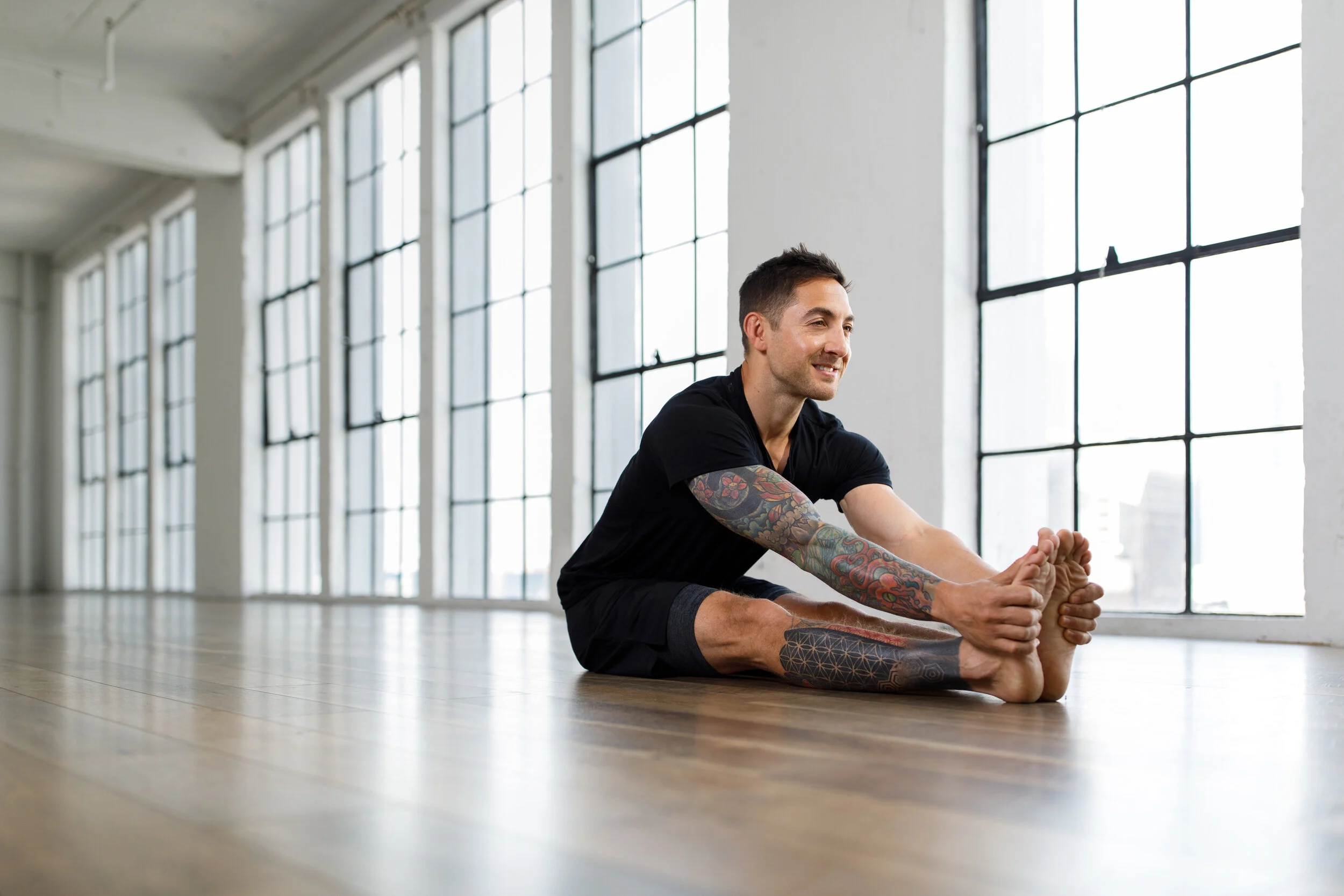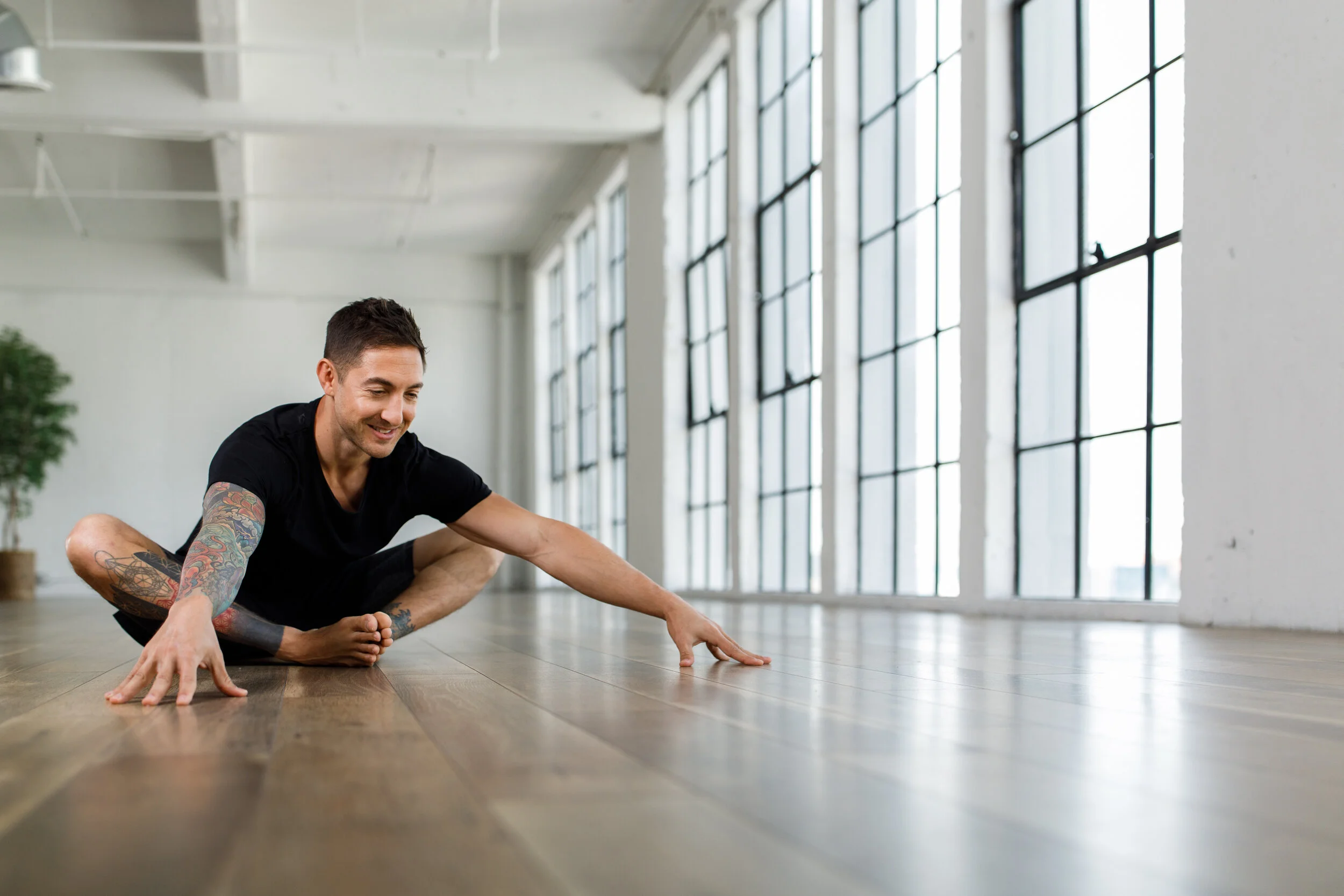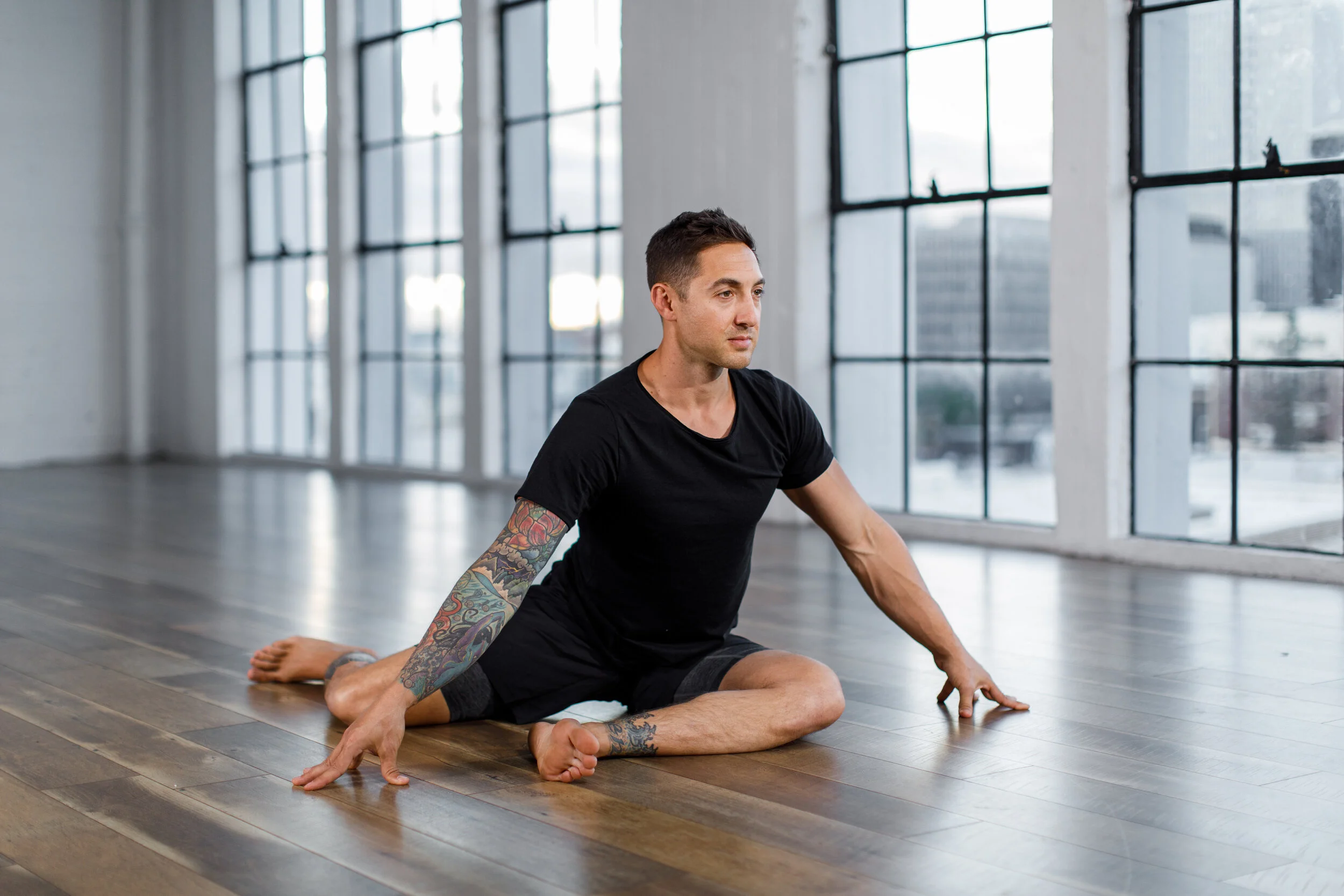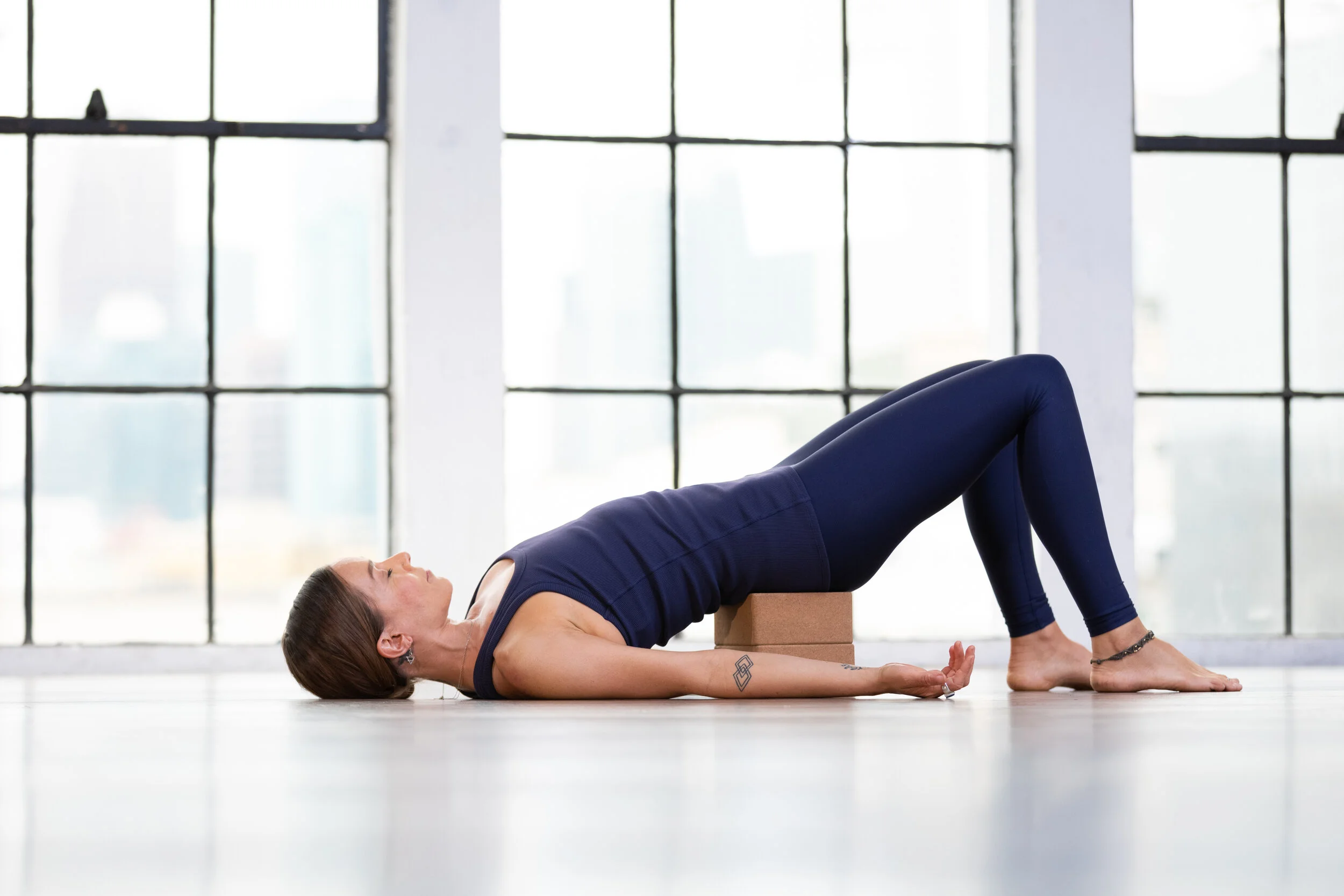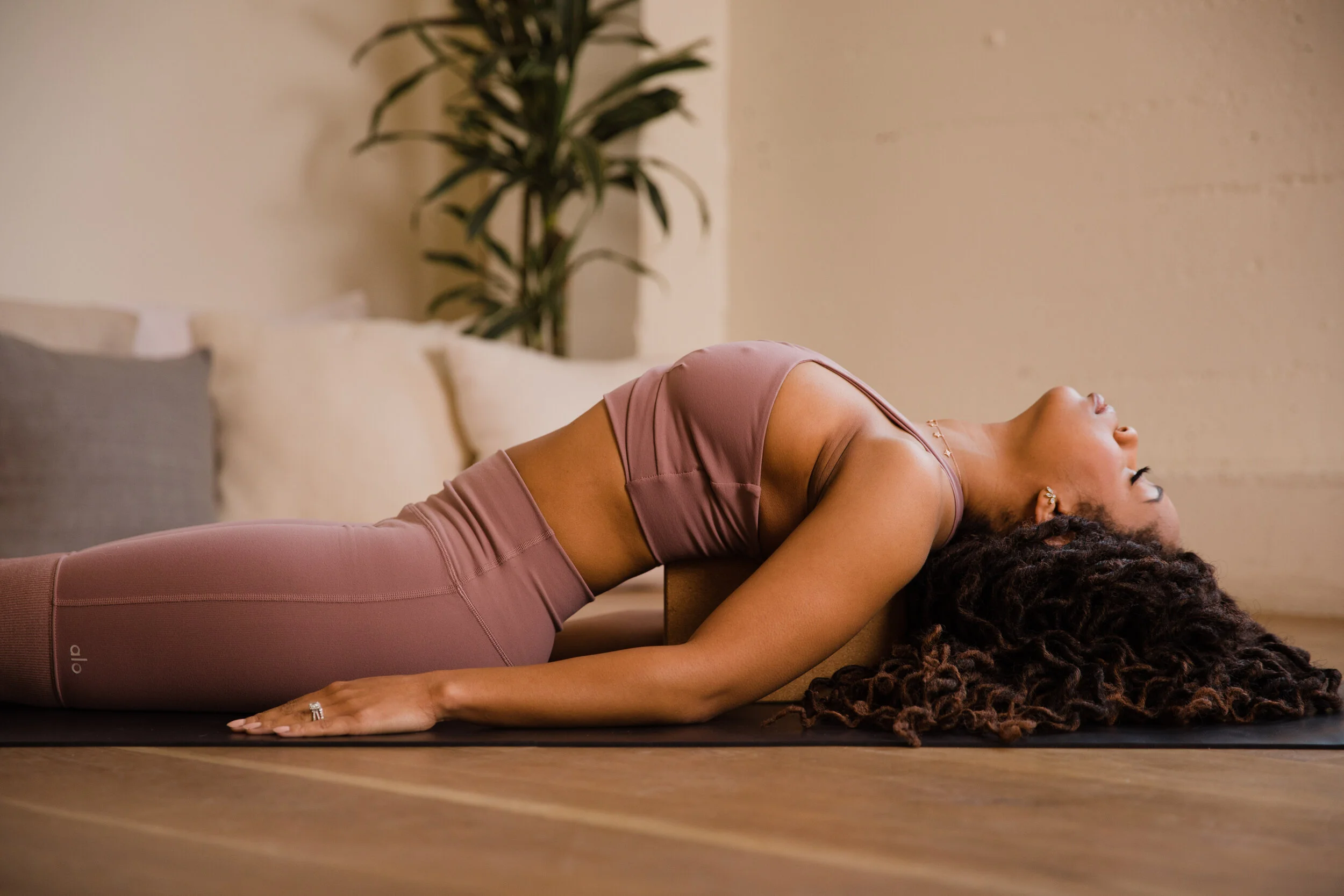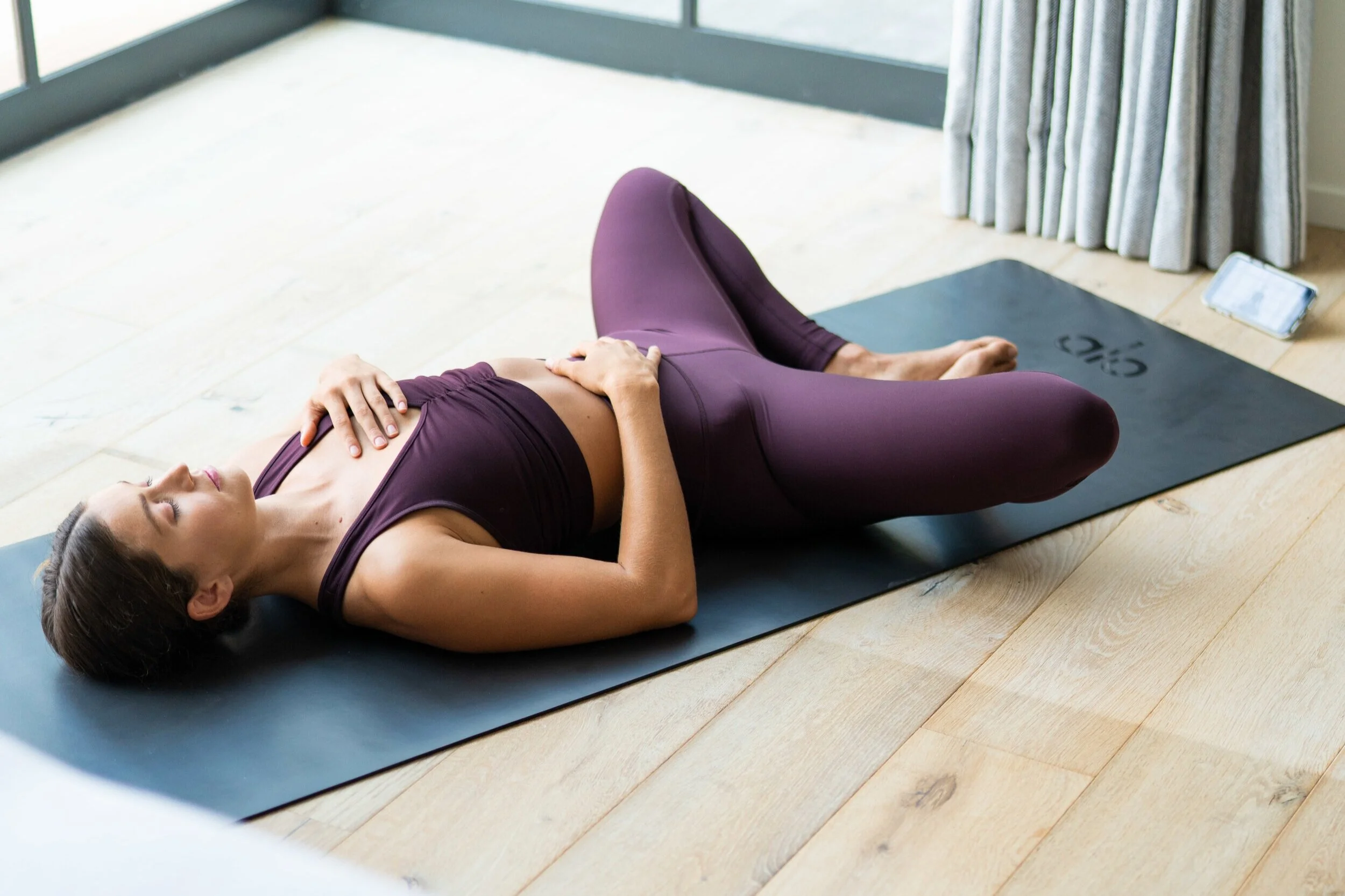A Yin Yoga Sequence for the Spring Equinox
The Spring Equinox is almost here, along with the bright energy that comes with this season of rebirth, growth, and sunlight. But it doesn’t mean you can’t slow down and add a little balance to your yoga practice with some long Yin Yoga holds.
This sequence starts small and closed-off, then gradually opens up into backbends with your heart open to the sun. Yin Yoga works with different tissue groups, so it shouldn’t feel the same as a Yang class like Vinyasa. When you find your edge — where it would feel about right to stop in a more active pose — dial it back about 30 percent. It can be hard to get used to, but with a regular Yin practice, you’ll start noticing the difference in your Yang practice, too.
In a typical Yin class, an instructor is there to keep time, leaving you to enter the poses fully without worrying about how many minutes have passed. If you’re doing this on your own time, try setting a timer with a very gentle sound to remind you to switch poses. You can also get creative and make an ambient music playlist with a song timed to each hold. (Need some yoga music inspiration? Check out Alo Moves on Spotify). This spring-themed sequence should take around 45-60 minutes to complete, depending on how long you hold the yin poses.
1.
Child’s Pose
Child’s Pose is virtually the same in Yin Yoga as it is in your Vinyasa practice — start on your knees, sink your hips back, and let your torso and head sink into the floor — but if this pose tends to give you some stretch, back off from it just a little. It should be restorative and easy to hold.
Hold:
5 minutes
Modifications:
Try a bolster, pillow, or folded blanket under your chest.
Benefits:
Resting and preparing for practice.
2.
Caterpillar
Come up to a seated position with your legs long in front of you, tilt your pelvis, then fold your torso over your legs. It’s very similar to a seated forward fold, but remember that in Yin, you shouldn’t feel strained. If it’s comfortable to bring your hands to your toes, do so, but that’s not the goal here.
Hold:
5 minutes
Modifications:
Try different pillow placements to make the pose come more naturally to you. You can try bending your knees or putting a bolster underneath them, stacking pillows up between your legs and chest, or sitting on a pillow to tilt your pelvis to make the forward bend easier. You can also practice this pose with your legs up a wall. If your hamstrings are tight, you can move straight to Butterfly.
Benefits:
Stresses the spine and massages your stomach muscles.
3.
Butterfly
Slowly and carefully come up from Caterpillar, then press the soles of your feet together to make a diamond shape. Fold back down over this new shape, and notice how this adjustment changes within your body.
Hold:
10 minutes
Modifications:
Caterpillar modifications can apply to Butterfly, too, including legs up a wall. A rolled-up blanket under your knees can help take some of the strain off. Move your feet farther from you for more of a hamstring stretch, or scooch them back in for more of an inner-thigh stretch.
Benefits:
Stretches the lower back with less of a strain on your hamstrings. Opens the inner thighs.
4.
Deer
Sit upright with your legs in Butterfly pose, then shift your right leg behind you so your foot is behind your hip. Shift your left leg so your thigh crosses in front of you and your left foot approaches your right knee. Plant your sit bones on the floor. You should be aiming for a right angle with both legs, but there’s no need to push it. Repeat on the other side.
Hold:
1 minute on each side
Modifications:
If you have trouble keeping your sit bones on the ground, try moving your feet farther inward. Stop right away if your knees protest even a little — you can try supporting the front knee with a blanket or bolster, or just spend this time sitting upright in a pose that feels right to you.
Benefits:
Improves digestion, rotates hips both internally and externally
5.
Twisted Roots
Lie on your back and windshield-wiper your legs back and forth to shake out any tension from Deer Pose. Hug your knees into your chest and cross your right leg over your left. If you can, hook your right foot behind your left leg. Drop your knees over to the left and relax your legs toward the ground. Open your arms out to a cactus shape and soften your shoulders down to the mat. Turn your head to the right and gaze over your shoulder. Repeat on the other side.
Take a look at our step-by-step guide to Twisted Roots for more guidance!
Hold:
5 minutes each side
Modifications:
Come into a simple Supine Twist — without locking your legs together — or just bring one leg to the side for Reclined Twist.
Benefits:
Releases tension in the spine, lower back, and neck. Stretches oblique, glutes, hips, and IT band. Opens your chest. Massages digestive organs.
6.
Supported Bridge
Briefly come to a seat and grab a block, a few pillows, or a rolled-up blanket. Lie down with your prop underneath your sacrum — the wide bone at the very base of your spine. (Make sure it’s not under your tailbone!) Bend your knees so your feet are flat on the floor, then rest your arms at your side or in a T-shape.
Hold:
3 minutes
Modifications:
If this is too much, try a shorter or softer prop behind you.
Benefits:
Stretches your hips, creates a gentle inversion, and strengthens your core.
7.
Fish
Next, let’s move that opening upward to your heart. Move your supportive prop so it’s running lengthwise down your back — you probably want to keep it a little lower in height than it was in Bridge. Let your arms rest by your side or in a T-shape. Legs can be straight or bent.
Hold:
3 minutes
Modifications:
Same as with Bridge, adjust your prop so it’s lower or softer if you’re having trouble melting into the pose.
Benefits:
Stretches your front-body and ribs, strengthens your back, and improves posture.
8.
Supine Butterfly
Move back to Butterfly, but with your heart out in the open instead of folded inward. Come to your back and put your legs back in the Butterfly position. This should feel restful, not stretchy or strained.
Hold:
5-10 minutes
Modifications:
Legs up a wall works great here, or come straight into a well-supported Savasana — possibly with a bolster or pillow under your knees — if you can’t get comfy. You can also try a rolled-up blanket under your thighs or feet.
Benefits:
Relieves stress, stretches your thighs, and improves circulation.
Want more sequences to celebrate Spring? Check out the Spring Awakening playlist on Alo Moves. Practice for free with a 14-day trial to Alo Moves.




